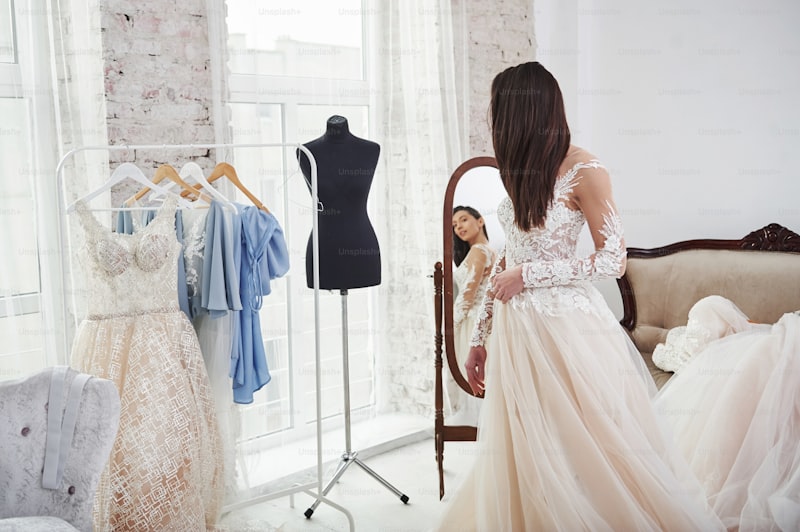Exploring Wedding Dress Trends from the Past: A Journey Through Time
Introduction
Weddings are significant milestones in our lives, often celebrated with glamour and elegance. One of the most essential elements of a wedding is the bridal gown, which has undergone profound transformations over the years. In this article, we delve into the fascinating wedding dress trends from the past, exploring styles, fabrics, and influences that have shaped bridal fashion. We aim to provide a comprehensive overview, perfect for brides-to-be, fashion enthusiasts, and anyone with a keen interest in wedding history.
The Evolution of Bridal Fashion
Bridal fashion reflects the social, economic, and cultural influences of its time. From the Victorian era's opulence to the minimalist styles of the 21st century, wedding dresses tell tales of changing tastes and values. Below is a brief overview of significant wedding dress trends through the decades:
| Decade | Fashion Trends | Notable Features |
| 1920s | Flapper Styles | Short hemlines, dropped waist, intricate beadwork |
| 1930s | Elegant Silhouettes | Longer hemlines, satin fabrics, elegant necklines |
| 1950s | Puffy Sleeves and Full Skirts | Tea-length dresses, voluminous skirts, lace details |
| 1970s | Bohemian and Vintage | Flowy gowns, natural fabrics, floral accents |
| 1990s | Simplicity and Minimalism | Simple lines, understated fabrics, column silhouettes |
| 2000s | Destination Weddings | Lightweight materials, casual styles, beachy vibes |
1920s: The Flapper Era
The 1920s saw radical changes in women's fashion, influenced by the flapper movement. Women sought liberation, and this ethos was reflected in their bridal choices. Wedding dresses in the 1920s often featured dropped waistlines and knee-length hemlines, a stark contrast to traditional long gowns. Fabrics included silk, satin, and intricate beadwork, which added a sense of sparkle and glamour. This decade's trends inspire many modern brides looking for a touch of vintage flair.
1930s: The Golden Age of Hollywood
As Hollywood glamour rolled in, wedding dresses took on a more sophisticated silhouette. The 1930s introduced gowns with elegant flowing lines made from luxurious fabrics like silk and lace. Brides in this era often opted for long sleeves and high necklines, reflecting the influence of movie stars. Iconic actresses like Greta Garbo and Joan Crawford influenced bridal beauty ideals and styles.
1950s: The Post-War Glamour
The 1950s celebrated femininity like never before. Designers such as Christian Dior popularized the A-line silhouette with voluminous skirts. Wedding dresses of this time often featured puffy sleeves and intricate lace details, making brides look like princesses. This era marked a return to traditional values and elaborate celebrations, echoed in extravagant wedding ceremonies.
1970s: The Bohemian Influence
Embracing a more relaxed, natural aesthetic, the 1970s introduced bohemian styles into wedding fashion. Brides often chose flowy gowns made from soft, natural fabrics, opting for floral accents and minimalistic designs. This trend was a reflection of the counterculture movement, where individuality and comfort were paramount. The wedding dresses of this decade often featured long sleeves and lace details, resonating with the free-spirited vibe of the era.
1990s: Minimalism at Its Peak
The 1990s marked a shift towards minimalist styles. Simple lines, understated designs, and column silhouettes became popular among brides. With the advent of the 'Grunge' movement, some brides even incorporated edgy elements into their looks, contrasting traditional elegance with contemporary style. Iconic figures such as Kate Moss and Jennifer Aniston were often cited as style inspirations for brides during this era.
2000s: Simplification and Destination Weddings
As life became more fast-paced, wedding fashions took on a more simplified approach. The 2000s saw an increase in destination weddings, prompting the need for lightweight and casual bridal gowns. Brides favored comfortable attire suitable for beach or garden ceremonies, opting for effortless styles over opulent designs. This era reflected a more intimate approach to weddings, with many couples prioritizing experiences rather than material extravagance.

Conclusion: Honoring the Past While Embracing the Future
Wedding dress trends from the past offer treasured lessons and inspirations for today’s brides. While styles have evolved dramatically, the essence of what a wedding dress symbolizes—love, commitment, and celebration—remains timeless. When choosing a wedding dress, consider not only what flatters your figure but also what reflects your personality and values. If you find inspiration in the elegance of the 1950s or the carefree spirit of the 1970s, embrace it! Ultimately, your wedding day is about celebrating your love story in a way that feels right for you.
Final Thoughts and Recommendations
As you explore wedding dress trends from the past, here are a few tips to keep in mind:
- Research: Delve into different eras to find what resonates with your style.
- Try on Various Styles: Don’t hesitate to try on dresses from different decades—you may discover a hidden gem!
- Incorporate Personal Touches: Whether it's an old family heirloom or a modern twist on a vintage style, make it your own.
Remember, your wedding dress should make you feel beautiful and confident on one of the most important days of your life. Embrace the past to create a future that’s uniquely yours.